Showing user data on a page by query:
$query = "SELECT * FROM COLLECTIONS WHERE uid = $_GET['user_id']";
But problem is that user can see other users data by changing that uid. How to solve this problem.
Showing user data on a page by query:
$query = "SELECT * FROM COLLECTIONS WHERE uid = $_GET['user_id']";
But problem is that user can see other users data by changing that uid. How to solve this problem.
Take your website offline. NOW. Somebody is going to either wipe the data or steal the data or inject malware that's served to all of your customers
Breathe. You've bought yourself some time, assuming it hasn't already been breached.
These mitigate, in order of "has biggest immediate benefits" to "is probably most important", one problem each. (Apart from number 3, which mitigates anywhere from 4 to 32241 problems of equal or greater magnitude to number 1.)
. operator when defining your query string. Rebuild all of your database handling code to use some sort of parametrised SQL query system.Yes, I know, that website is probably important and needs to stay up so people can use it. But try this:
www.badwebsite.com/your/page/here?uid=1 OR 1
All of the data is visible! You are accepting code from the user and running it in your database. Now what if I decided to delete all of your database tables?
That's just covering the first point I made. Please trust that there are bigger problems for your users if you haven't done step 2, the least of which is hundreds of their accounts on other websites (e.g. Gmail, Example Bank) becoming known to cyber criminals.
Take a look at this comic strip:

There's also a unicode-handling bug in the URL request library, and we're storing the passwords unsalted ... so if we salt them with emoji, we can close three issues at once!
This is made to be more funny, but the problem described in this comic strip is probably less bad than the problem you are facing. Please, for the sake of whoever has entrusted you with their data, turn it off for a few days whilst you try to make it something resembling secure.
You might want to bring in a technical consultant; if your developers are not experienced in creating intrusion-proof software then they're probably not up to the task of making insecure software secure (which is orders of magnitude harder, especially if you're new to that sort of thing).